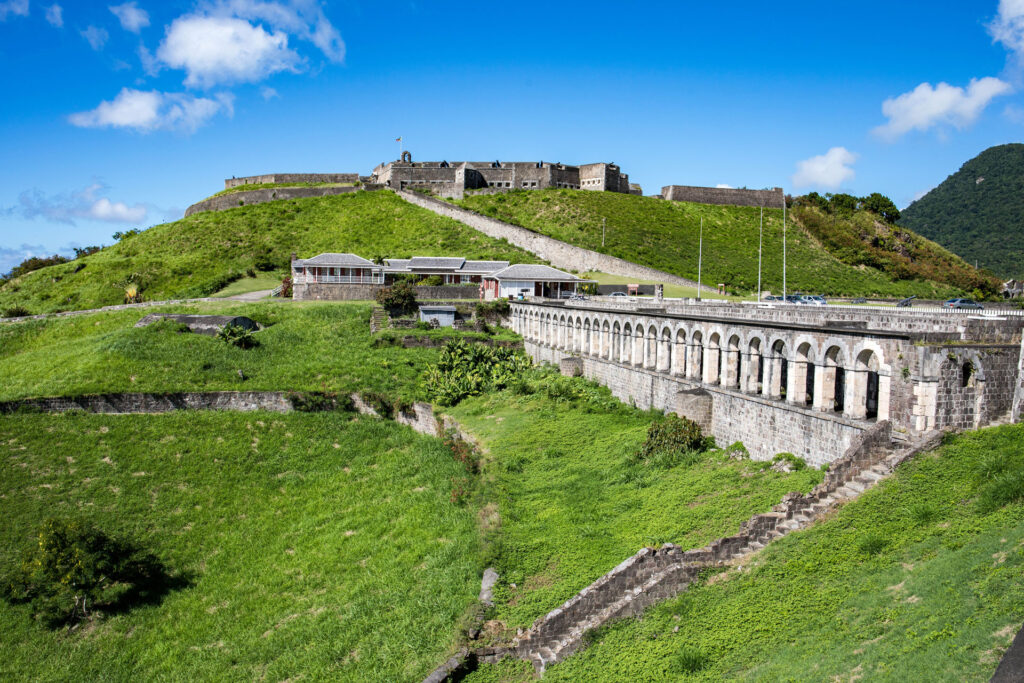In part two of our series on the region’s magnificent UNESCO World Heritage Sites, Shelly-Ann Inniss introduces five more gems — full of natural and cultural charm — to add to your bucket list
Discover five more of the Caribbean’s World Heritage Sites
This is the second in our series of travel features showcasing these special places. Click here to read our first five.
Canaima National Park, Venezuela
Year of inscription: 1994
Spanning some 12,000 square miles along Venezuela’s borders with Guyana and Brazil, Canaima National Park is the country’s second largest. It’s home to Angel Falls which, at 3,212 feet, is the world’s highest uninterrupted waterfall, and celebrated as one of the “seven wonders of South America”. Among the park’s waterfalls, rivers, lakes, and spectacular landscapes tower its breath-taking sandstone tepuis (flat-topped, cliff-edged mountains). These formations date back some two billion years to when South America and Africa were part of the super-continent, Pangea. You can enjoy stunning views on a hike to the highest tepui, Mount Roraima.
Urban Historic Centre of Cienfuegos, Cuba
Year of inscription: 2005
Dubbed “la Perla del Sur” (the pearl of the south), the charming neoclassical architecture in south-central Cuba’s Urban Historic Centre of Cienfuegos is, according to UNESCO, “the first and an outstanding example of an architectural ensemble representing the new [19th century] ideas of modernity, hygiene and order in urban planning”. Strolling along its well-maintained municipal buildings and residential houses, you might just have to remind yourself you aren’t on the set of a classic film. And there’s plenty ground to cover since the downtown area contains hundreds of buildings erected in the 19th and 20th centuries.
Brimstone Hill Fortress National Park, St Kitts
Year of inscription: 1999
It’s a steep ascent to the Brimstone Hill Fortress, so you might want to tackle this one on four wheels unless you’re doing it for exercise. This British engineered fort — known as the Gibraltar of the Caribbean — was built by enslaved Africans using the natural topography of this 755-foot twin-peaked volcanic hill. Completed in the 18th century, it’s the earliest existing example of the polygonal system of fortress design. Fort George (the citadel) dominates one of the peaks and houses a museum and gift shop. On a clear day, in the distance you’ll see Sint Eustatius, Saba, St Martin, St Barthelemy and other islands.
Blue and John Crow Mountains, Jamaica
Year of inscription: 2015
Could this be the Garden of Eden? Often called “the lungs of eastern Jamaica”, these mountains are enchanting and mystical. It’s the only place to observe Jamaica’s rare birds, including the endangered Jamaican blackbird. This nearly 200 square mile national park, a nature-lover’s paradise, is home to the Blue Mountain Peak (Jamaica’s highest point at 7,402 feet), hiking trails, countless endemic plant and animal species (including the largest butterfly in the western hemisphere), and one of the largest Caribbean migratory bird habitats. Observe the thriving mountainside coffee fields on a trek to the top while learning from knowledgeable guides about the Maroons who used these mountains to escape captors.
Morne Trois Pitons National Park, Dominica
Year of inscription: 1997
The star attraction of this 27 square mile sanctuary is, without a doubt, the 4,403-foot-high volcano known as Morne Trois Pitons. Trek along any of the six marked hiking trails — complete with picnic spaces and shelter — which will take you to the Valley of Desolation, the country’s largest lakes (including the Boiling Lake where the water reaches 95 degrees Celsius!), five volcanoes, magnificent waterfalls, countless rivers, encounters with endemic species, awe-inspiring views, and loads more to write home about.

